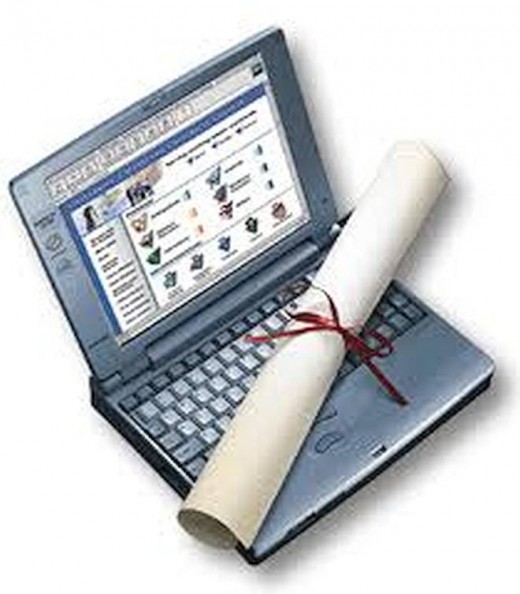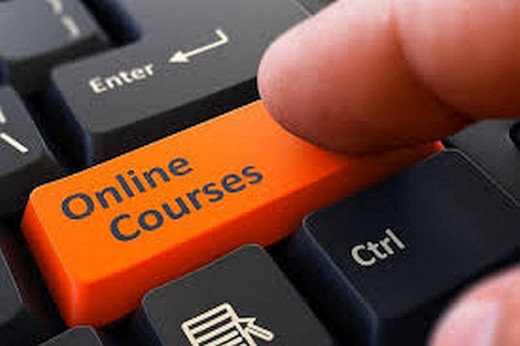Take Online Courses
Long gone are the days when you had to take a course in the classroom. Now your classroom can be your computer screen. These days almost everyone is taking or has taken an online class either for college credit or merely for self-enhancement.
Online education has advanced rapidly since it first became available on the world wide web. Some educational institutes offer online courses in conjunction with taking courses in the classroom. However, just as many offer online courses exclusively online.
The development of computers and the internet have made distance learning easier and faster and have given rise to the "Virtual University" where the entire program of study is conducted online.

There are various terms that mean the same thing about online education:
- Distance learning
- E-learning
- Virtual learning
- Online courses
- Courses online
- Online classes
- Classes online
It was reported that over 12 million students have taken classes online and that number is likely to increase. Within the next 10-20 years, almost everyone will be taking online courses. More stay at home moms will take online courses because they will be able to take care of the home and get their degree at their own pace. Almost everyone is computer literate and spend hours on the computer anyway. So why not log onto a site and take a course? There are lots of free courses online even if one is not seeking a degree. There are courses that teach flower arrangements, how to sew, how to make jewelry, etc. The sky's the limit when it comes to the categories of courses one can take at no cost.

Virtual Education
Virtual education describes online education where the teacher and the students use the internet to communicate.
Virtual education simply refers to instruction in a learning environment where the teacher and students are separated by time or space, or both. The teacher is responsible for providing course content through various tools that will enable tthe students to learn as if they were in the classroom. All the courses are taught on the internet without any face-to-face contact. In other words, neither the teacher nor the students have to enter into a classroom at all.
The methods the teacher uses may include multimedia resources, the internet, videoconferencing, teleconferencing, e-mails, and voice mail, among other things. The students communicate to the teacher through the same methods.
Virtual education is a program where courses are online and not in the classroom. All course material is provided electronically and can be viewed with a browser.
A wide spectrum of instruction methods is available. Here are just a few:
- Video-based courses are courses where the students watch a video of the teaching speaking. PowerPoint presentations might be used for illustrations. This teaching doesn't have to be done in real time but can be done at the students' convenience.
- Audio-based courses are courses where only the soundtrack of the lecturer is provided. Like the video-based courses, the student may take the course at a time that is convenient for him, as long as he finishes the course by the deadline set forth by the teacher.
- Teleconferencing courses are where teacher and students call a designated number. There is no face-to-face contact, but the teacher can teach and call on different individuals to answer certain questions. (I use www.freeconferencing.com).
- Web-supported textbook courses are based on a specific textbook. Students are required to read and reflect on the chapters by themselves. Review questions, topics for discussion, exercises, case studies, etc. are posted on the teacher's website, The teacher and the students meet online at a designated time in a chatroom to discuss the lessons.(I post class pages on www.quia.com).
- Group study courses are courses where individuals meet in small groups to reach and report their findings. The students must live fair close to one another for this to be feasible.
- Independent study courses are courses where students study independently on their own but take tests online to prove they understand the information. However, the teacher is available to answer questions.
- Facebook courses are courses set up for students to meet the teacher on his or her Facebook page and the teacher writes some text, asks questions and the students respond. (www.facebook.com).
Benefits of taking online classes
There are a lot of benefits to the company or school that provides the education, just like there are benefits for the people who are learning from these institutions.
Benefits to the teachers
The institution is able to provide quality education to many people at one time. The teachers do not have to abide by formal classroom or class times. The teaches are able to reach people all over the world instead of those in a local community. There is no limit on the number of people who learn from these institutions too. It is profitable to have online courses. Once the course is posted online, the teacher is free to do other things.
Benefits to the students
Students who take online course can do so from their home. There is no need use gas to drive anywhere. The students who take the course can do so in their pajamas if they like. They can get up in the middle of the night and complete an assignment. Students can work at their own pace as long the course is completed by the deadline set forth by the teacher.








